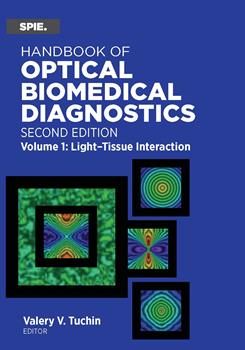|
In frequency-domain spectroscopy, the intensity of the light source is sinusoidally modulated at a frequency f. One can fully describe the modulated intensity using three parameters - namely, the average intensity (or DC, from the electrical terminology of direct current), the amplitude of the intensity oscillations (or AC, from the electrical equivalent of alternating current), and their phase (F). The modulation depth is defined as the ratio AC/DC. Because the phase and the modulation depth are key features of frequency-domain spectroscopy, the term phase modulation is sometimes used interchangeably with frequency domain. The phase of the measured intensity wave is related to the optical propagation time through the medium. If t is a typical propagation time - say, the mean photon time of flight between the light source and the optical detector - then the phase of the detected signal (relative to the light source) is on the order of vt, where v¼2pf is the angular modulation frequency. To obtain phase measurements with a good signal-to-noise ratio, it is required that vt be approximately equal to 1 (corresponding to a relatively large phase angle of 1 rad, or approximately 57 deg), which is the condition that guides the choice of the modulation frequency, f. In the case of nearinfrared spectroscopy and imaging of tissues, the mean photon time of flight is on the order of 1 ns for source–detector separations of a few centimeters. Consequently, the condition vt ≈ 1 results in f ≈ 100 MHz, which falls within the radio-frequency range. Frequency-domain optical studies of biological tissues typically use intensity-modulation at frequencies on the order of 100 MHz.
In this chapter, we describe frequency-domain instrumentation (Section 7.2), diffusion theory (Section 7.3), and representative in vivo applications of frequency-domain spectroscopy (Section 7.4) and imaging (Section 7.5). We have aimed to make this chapter self-contained, while providing extensive references to the literature as a guide for additional reading and for in-depth coverage of topics that are merely mentioned here due to space considerations.
|


